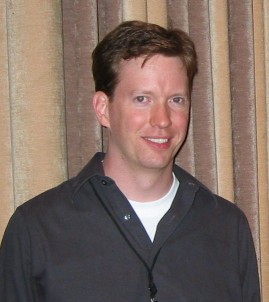Environmental & Science Education
History of Science
Edward Hessler
 |
By Seanmcarroll (Own work)
[CC BY 3.0 (http://creativecommons.org/licenses/by/3.0)],
via Wikimedia Commons |
Discovering Gravitational Waves
Sean Carroll, a theoretical physicist at the California Institute of Technology wrote a
great post about the confirmation of gravitational waves, a staggering, indeed magnificent STEM achievement. His entry includes a short animation on what gravitational waves are, links to the material in red below, a photograph of a note on a bet made in 1978 by theoretician Kip Thorne that gravitational waves would be discovered before 1988, a bet he obviously lost. It still hangs outside Thorne's office and also says something about him. Carroll describes the magnitude of this discovery in a way that few others have.
Carroll ends nicely by placing this new finding in the decade of discoveries/to be discovered in the 2010s. So far, the record is 2 out of 5! Here are some of his comments about LIGO.
"We’ve become a bit blasé about such things: physics makes a prediction, it comes true, yay. But we shouldn’t take it for granted; successes like this reveal something profound about the core nature of reality.
 |
| By MOBle at English Wikipedia [Public domain], via Wikimedia Commons |
"Some guy scribbles down some symbols in an esoteric mixture of Latin, Greek, and mathematical notation. Scribbles originating in his tiny, squishy human brain. (Here are what some of those those scribbles look like, in my own incredibly sloppy handwriting.) Other people (notably Rainer Weiss, Ronald Drever, and Kip Thorne), on the basis of taking those scribbles extremely seriously, launch a plan to spend hundreds of millions of dollars over the course of decades. They concoct an audacious scheme to shoot laser beams at mirrors to look for modulated displacements of less than a millionth of a billionth of a centimeter — smaller than the diameter of an atomic nucleus. Meanwhile other people looked at the sky and tried to figure out what kind of signals they might be able to see, for example from the death spiral of black holes a billion light-years away You know, black holes: universal regions of death where, again according to elaborate theoretical calculations, the curvature of spacetime has become so pronounced that anything entering can never possibly escape. And still other people built the lasers and the mirrors and the kilometers-long evacuated tubes and the interferometers and the electronics and the hydraulic actuators and so much more, all because they believed in those equations. And then they ran LIGO (and other related observatories) for several years, then took it apart and upgraded to Advanced LIGO, finally reaching a sensitivity where you would expect to see real gravitational waves if all that fancy theorizing was on the right track."
Presentations on the LIGO findings
Press conferences may not be your cup-of-tea but the one held at the National Science Foundation on the discovery a delight to me. It informed, captured Feynman's "pleasure of finding things out", was collegial and even funny. When Ranier Weiss said something about experimental physicists and theoretical physicists I wondered whether he was going to escape this inevitable comparison. He did and theoretician Kip Thorne had something to do with this.
 |
Simulating eXtreme Spacetimes
[CC BY-SA 4.0 (http://creativecommons.org/licenses/by-sa/4.0)],
via Wikimedia Commons |
The demonstrations and animations, discussion of the meaning of the LIGO graphs and the demonstrations on two requirements of the "gadget" that measured the waves as well as how possible perturbations in the mirrors are managed were well done and informative. Each of the three presentations by major players were perfectly timed and presented. These were physicists who wanted to make their work as clear as possible. They talked to an interested audience; not down. The questions from the press gathered are interesting and shed some light on other aspects of the finding. I recommend this
video, beginning to end, strongly.
Questions have been raised about whether the LIGO finding will tell physicists something about quantum gravity. Dr. Sabine Hossenfelder, a quantum gravitational researcher at the Franklin Institute (Germany), writes a great blog for Forbes. Her short
answer is "Don't get your hopes up too high."
Einstein and his remarkable equations: Right again!!!




 CGEE Student Voice
CGEE Student Voice
No comments:
Post a Comment